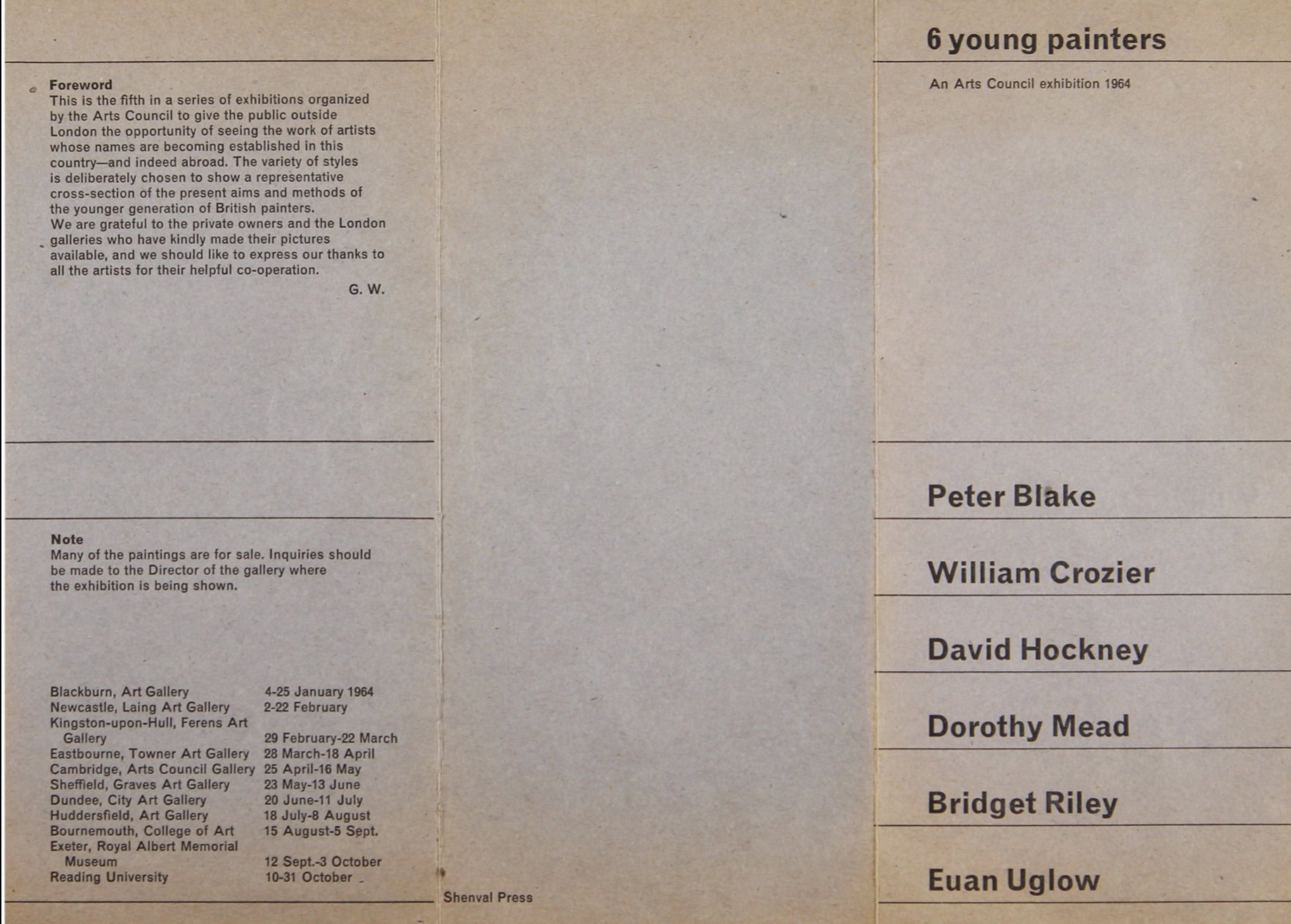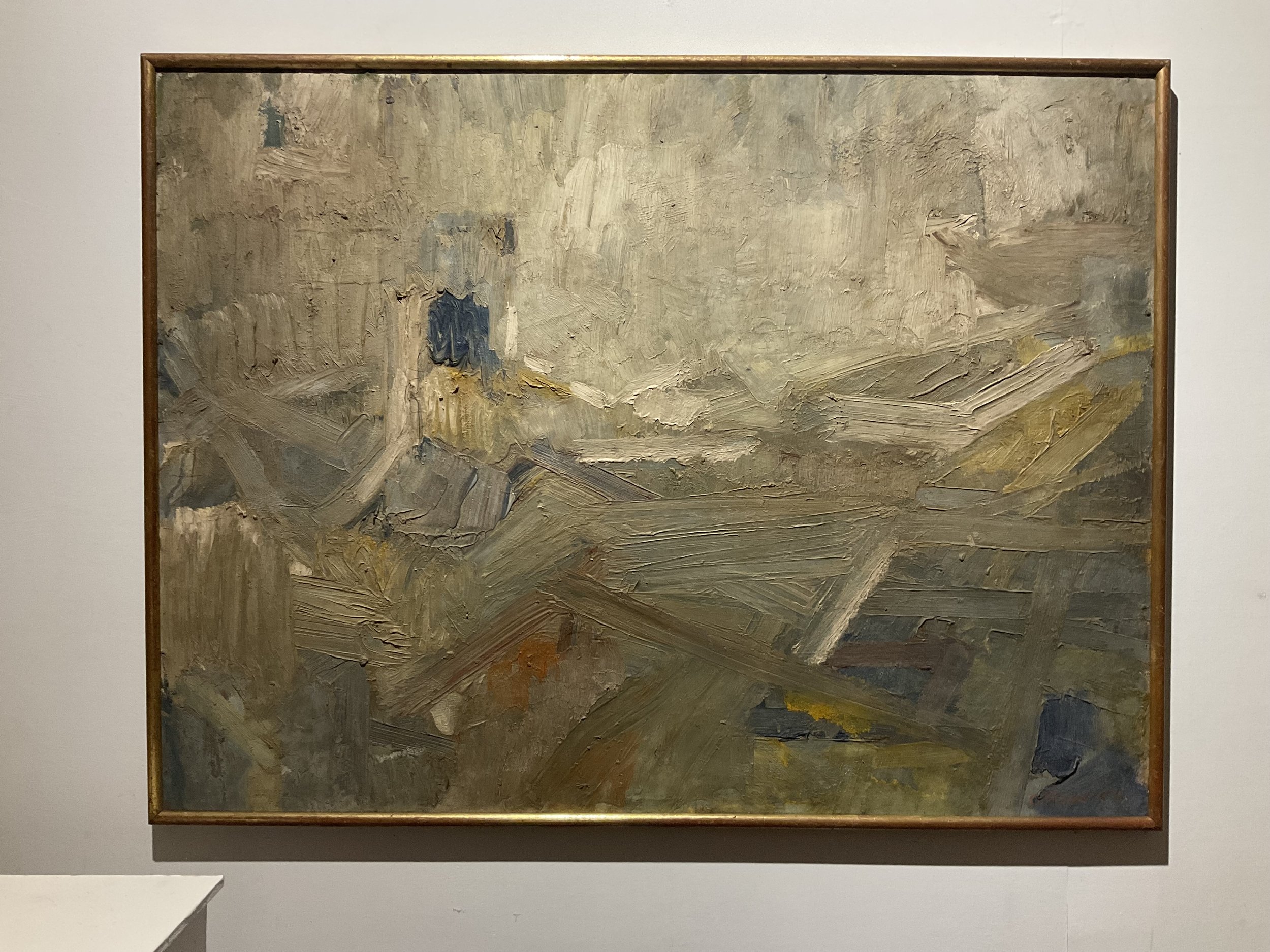When it comes to Art the Provence of a particular piece really is everything. It is so important that the authenticity can be proved and documented, so we are delighted that the 2 works by Dorothy Mead that we have just added to the website can be traced directly back to a key exhibition in 1964 .
In 1964 The Arts Council organised a touring exhibition of 6 young artists so that the public outside London could become more familiar with key artists who were making a name for themselves both in the capital and worldwide . So while I am sure many of you will be aware of Peter Blake, David Hockney, Bridget Riley, William Crozier and Euan Uglow you may not be as familiar with Dorothy Mead . Why ? Well sadly she died in her 40’s and like a number of female artists sank into obscurity while her young contemporaries rose to be some of the greats of their time and became household names .
So who was Dorothy Mead ?
Dorothy Mead was a loyal student to Bomberg and championed his work and methods even when the wider British art community was staunchly against Bomberg’s teaching methods and philosophy, leading to Mead being asked to leave the Slade before completing her studies there. It is difficult to know why the art-world failed to appreciate Bomberg’s works despite his students and friends being able to recognise his skills: perhaps they found his teaching style too unorthodox or were threatened by his approach and philosophy. Whatever the reasoning, the establishment was against Bomberg and the Borough Group as a result, which arguably hindered the flourishing of the group-members’ careers as galleries refused to exhibit their work.
Also it seems Mead’s gender had a great deal to do with her career not finding the success it had the potential to. Female artists have had the odds stacked against them for as long as society itself has been patriarchal. Until recently, non-male artists were rarely commissioned to make work, and ratio of male to female artists in galleries always shows there are more male artists being exhibited, sold and critiqued. The men who were influenced by Bomberg and were closely aligned to him, such as Holden, still found more success than their female counterparts. And the men who were influenced by Bomberg and distanced themselves from his philosophy, such as Auerbach, found even greater success. Considering that Auerbach was three years younger than Mead, they were certainly contemporaries and so the comparison between their works is relevant, highlighting the distinct differences between their careers. If Mead had distanced herself from Bomberg and continued to study at the Slade, as Auerbach did, she might have been a considerably more well-known and successful artist; and yet, maybe her allegiance to Bomberg and her respect for his teachings made her the artist she became.
Indeed it is interesting to note that Mead most often just used her initial ‘D’ in any advertising so as to hide her gender.
The image above is the list of works that were shown in the 1964 travelling exhibition and we are delighted to be able to offer 2 of these here at Blondes Fine Art in Hertfordshire , in fact we like them so much they currently hang in our home and it has to be said that they look so much better in real life than in the images attached at the end of this article. They really are ones to come a view first hand.
Both are fabulous examples of her work and were retained by the artists family after her death .
N0. 17 ‘View of river from Greenwich’ 1958 comes from the exact period when she was expelled from The Slade for refusing to take the module about perspective
In 1958 Mead won the Slade’s prize for Figure Painting and then the Steer Prize for Landscape Painting. Mead became the first woman president of the Slade’s student exhibiting society, the Young Contemporaries. The next year Mead became at loggerheads with the principle William Coldstream as she refused to take the Slade’s course on perspective, likely thinking it would damage her work and go against the teachings of Bomberg she said “perspective has no place in art” and wrote a thesis on that aim, but it was refused, so she was asked to leave the Slade. In 1960 a similar argument broke out at the Royal College of Art between Robin Darwin and student David Hockney over the latter’s refusal to complete the general studies course.
No. 21 ‘Still life- Flowers’ 1962
This piece is an oil on canvas that was a gift from the artist to her mother and bears a hand written label stating the fact , verso.
These 2 oils by Dorothy Mead retain their original gold exhibition frames and are ready to hang .
Do contact us for additional information or to arrange a viewing .



